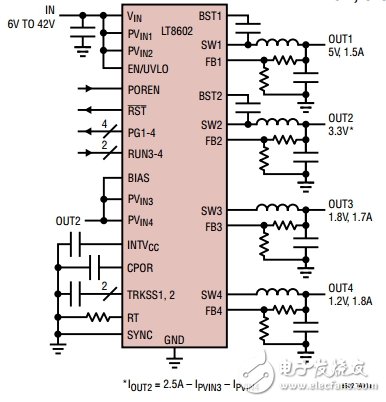The Advanced Driver Assistance Systems (ADAS) helps to drive safely and alert the driver whenever the system detects a risk from surrounding objects, regardless of the risk. The addition of the ADAS system is one of the major trends in the car from 2016 to 2020. Such systems typically provide dynamic functions such as adaptive cruise control, blind spot detection, lane departure warning, hiccup monitoring, night vision, and more. Consumers are increasingly concerned about driving safety, demanding comfortable driving, and the government's driving safety regulations are increasing. These factors have contributed to the growth of ADAS in the car. At the heart of most ADAS systems is a microprocessor that processes all inputs from various sensors in the vehicle and then processes the inputs further to provide information to the drive in an easily identifiable and understandable form. member. In addition, such systems are usually powered directly from the vehicle's main battery. The nominal voltage of the main battery is 9V to 18V, but due to voltage transients in the system, it may be as high as 42V, or it may be as low as 3.5 in the case of cold start. V. It is therefore clear that any DC/DC converter used must be able to handle a wide input voltage range of 3.5V to 42V. Many ADAS systems require 5V and 3.3V rails to power various analog and digital IC components, but processor I/O and core voltages are below 2V. In addition, space and heat issues must also be considered. Although it is common to use high voltage DC/DC converters to provide 5V and 3.3V rails, it is not always practical to use such converters to provide voltage rails below 2V, as multiple single output converters will be used. The solution is oversized and has potential thermal limits. A more suitable solution is to use a single DC/DC converter that provides multiple outputs. Due to these limitations, Linear Technology has developed the LT8602, a 4-output, single-chip synchronous buck converter. Its 3V to 42V input voltage range makes the device ideal for automotive applications including ADAS, as these applications must stabilize cold-start and stop-start conditions with minimum input voltages as low as 3V and load dump transients of over 40V. state. As can be seen in Figure 1, its 4-channel design integrates two high-voltage 2.5A and 1.5A channels and two lower-voltage 1.8A channels to provide four independent outputs and provides as low as The 0.8V voltage allows the device to drive the lowest voltage microprocessor core currently available. Its synchronous rectification topology provides up to 94% efficiency, while Burst Mode® operation keeps quiescent current below 30μA in no-load standby (all channels are on), making the device ideal for always on system. Figure 1: Schematic of the LT8602 with 5V, 3.3V, 1.8V, and 1.2V outputs The LT8602's switching frequency can be set from 250kHz to 2MHz and can be synchronized within this range. Its 60ns minimum turn-on time allows 16VIN to 2.0VOUT buck conversion at 2MHz switching frequency on the high voltage channel. When the high-voltage VOUT2 channel feeds two low-voltage channels (VOUT3 and VOUT4), the two low-voltage channels can provide an output as low as 0.8V and can be switched at 2MHz, resulting in a very compact footprint. 25mm x 25mm) 4-output solution. Dongguan Tuojun Electronic Technology Co., Ltd , https://www.fibercablessupplier.com
ADAS requires multi-rail DC/DC converter
ADAS basics